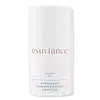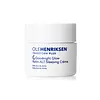What's inside
What's inside
 Key Ingredients
Key Ingredients

 Benefits
Benefits

 Concerns
Concerns

 Ingredients Side-by-side
Ingredients Side-by-side

Water
Skin ConditioningGluconolactone
Skin ConditioningC12-15 Alkyl Benzoate
AntimicrobialPropylene Glycol
HumectantC13-15 Alkane
SolventPEG-100 Stearate
Lactobionic Acid
BufferingGlycerin
HumectantC12-15 Alkyl Ethylhexanoate
EmollientOctyldodecyl Myristate
EmollientDimethicone
EmollientCetearyl Alcohol
EmollientGlyceryl Stearate
EmollientEthoxydiglycol
HumectantPalmitic Acid
EmollientHydrogenated Vegetable Oil
EmollientStearic Acid
CleansingButylene Glycol
HumectantTocopheryl Acetate
AntioxidantRetinyl Palmitate
Skin ConditioningAscorbyl Palmitate
AntioxidantGlycyrrhiza Glabra Root Extract
BleachingAnthemis Nobilis Flower Extract
MaskingLeuconostoc/Radish Root Ferment Filtrate
AntimicrobialLaminaria Saccharina Extract
Skin ProtectingCalendula Officinalis Flower Extract
MaskingEchinacea Purpurea Extract
MoisturisingHydrogenated Lecithin
EmulsifyingPhospholipids
Skin ConditioningHydrogenated Coco-Glycerides
EmollientSodium Hyaluronate
HumectantHelianthus Annuus Seed Extract
Skin ConditioningCaprylic/Capric/Myristic/Stearic Triglyceride
EmollientPhosphatidylcholine
EmulsifyingOctyldodecanol
EmollientMyristic Acid
CleansingCeteareth-20
CleansingSteareth-2
EmulsifyingPolyacrylamide
C13-14 Isoparaffin
EmollientSodium Hydroxide
BufferingLaureth-7
EmulsifyingMagnesium Aluminum Silicate
AbsorbentCaprylyl Glycol
EmollientXanthan Gum
EmulsifyingDisodium EDTA
Disteareth-100 Ipdi
Phenoxyethanol
PreservativeChlorphenesin
AntimicrobialParfum
MaskingHexyl Cinnamal
PerfumingBlue 1 Lake
Cosmetic ColorantCI 19140
Cosmetic ColorantWater, Gluconolactone, C12-15 Alkyl Benzoate, Propylene Glycol, C13-15 Alkane, PEG-100 Stearate, Lactobionic Acid, Glycerin, C12-15 Alkyl Ethylhexanoate, Octyldodecyl Myristate, Dimethicone, Cetearyl Alcohol, Glyceryl Stearate, Ethoxydiglycol, Palmitic Acid, Hydrogenated Vegetable Oil, Stearic Acid, Butylene Glycol, Tocopheryl Acetate, Retinyl Palmitate, Ascorbyl Palmitate, Glycyrrhiza Glabra Root Extract, Anthemis Nobilis Flower Extract, Leuconostoc/Radish Root Ferment Filtrate, Laminaria Saccharina Extract, Calendula Officinalis Flower Extract, Echinacea Purpurea Extract, Hydrogenated Lecithin, Phospholipids, Hydrogenated Coco-Glycerides, Sodium Hyaluronate, Helianthus Annuus Seed Extract, Caprylic/Capric/Myristic/Stearic Triglyceride, Phosphatidylcholine, Octyldodecanol, Myristic Acid, Ceteareth-20, Steareth-2, Polyacrylamide, C13-14 Isoparaffin, Sodium Hydroxide, Laureth-7, Magnesium Aluminum Silicate, Caprylyl Glycol, Xanthan Gum, Disodium EDTA, Disteareth-100 Ipdi, Phenoxyethanol, Chlorphenesin, Parfum, Hexyl Cinnamal, Blue 1 Lake, CI 19140
Water
Skin ConditioningGlycerin
HumectantVitis Vinifera Seed Oil
EmollientC12-15 Alkyl Benzoate
AntimicrobialDicaprylyl Carbonate
EmollientButyrospermum Parkii Butter
Skin ConditioningCetearyl Alcohol
EmollientLactic Acid
BufferingGlycolic Acid
BufferingGlyceryl Stearate
EmollientPotassium Hydroxide
BufferingPropanediol
SolventPolysorbate 60
EmulsifyingPanthenol
Skin ConditioningDimethicone
EmollientCetyl Alcohol
EmollientParfum
MaskingSodium Acrylate/Sodium Acryloyldimethyl Taurate Copolymer
Emulsion StabilisingHydroxyacetophenone
AntioxidantBakuchiol
AntimicrobialLeontopodium Alpinum Callus Culture Extract
AntioxidantIsohexadecane
EmollientLinoleic Acid
CleansingPEG-75 Stearate
Phenoxyethanol
PreservativeCetearyl Glucoside
EmulsifyingPolysorbate 80
EmulsifyingSteareth-20
CleansingCeteth-20
CleansingLinolenic Acid
CleansingXanthan Gum
EmulsifyingCitric Acid
BufferingEthylhexylglycerin
Skin ConditioningEnteromorpha Compressa Extract
Skin ProtectingSorbitan Oleate
EmulsifyingSantalum Album Extract
CleansingChamomilla Recutita Flower Extract
MaskingSaccharum Officinarum Extract
MoisturisingCitrus Limon Fruit Extract
MaskingGlycyrrhiza Glabra Root Extract
BleachingLeuconostoc/Radish Root Ferment Filtrate
AntimicrobialSodium Phytate
Silybum Marianum Fruit Extract
Skin ConditioningOcimum Sanctum Leaf Extract
Skin ConditioningTocopherol
AntioxidantCI 60730
Cosmetic ColorantCI 14700
Cosmetic ColorantLimonene
PerfumingLinalool
PerfumingCitral
PerfumingWater, Glycerin, Vitis Vinifera Seed Oil, C12-15 Alkyl Benzoate, Dicaprylyl Carbonate, Butyrospermum Parkii Butter, Cetearyl Alcohol, Lactic Acid, Glycolic Acid, Glyceryl Stearate, Potassium Hydroxide, Propanediol, Polysorbate 60, Panthenol, Dimethicone, Cetyl Alcohol, Parfum, Sodium Acrylate/Sodium Acryloyldimethyl Taurate Copolymer, Hydroxyacetophenone, Bakuchiol, Leontopodium Alpinum Callus Culture Extract, Isohexadecane, Linoleic Acid, PEG-75 Stearate, Phenoxyethanol, Cetearyl Glucoside, Polysorbate 80, Steareth-20, Ceteth-20, Linolenic Acid, Xanthan Gum, Citric Acid, Ethylhexylglycerin, Enteromorpha Compressa Extract, Sorbitan Oleate, Santalum Album Extract, Chamomilla Recutita Flower Extract, Saccharum Officinarum Extract, Citrus Limon Fruit Extract, Glycyrrhiza Glabra Root Extract, Leuconostoc/Radish Root Ferment Filtrate, Sodium Phytate, Silybum Marianum Fruit Extract, Ocimum Sanctum Leaf Extract, Tocopherol, CI 60730, CI 14700, Limonene, Linalool, Citral
Ingredients Explained
These ingredients are found in both products.
Ingredients higher up in an ingredient list are typically present in a larger amount.
C12-15 Alkyl Benzoate is made up of Benzoic Acid and long chain alcohols. It has a low molecular weight.
C12-15 Alkyl Benzoate is an emollient and texture enhancer. Due to its solubility, it is often used in sunscreens to help evenly distribute active ingredients.
As an emollient, C12-15 Alkyl Benzoate helps soften and hydrate your skin. Emollients create a film on your skin that traps moisture within.
This ingredient has been reported to cause eye irritation.
Learn more about C12-15 Alkyl BenzoateCetearyl alcohol is a mixture of two fatty alcohols: cetyl alcohol and stearyl alcohol. It is mainly used as an emulsifier. Emulsifiers help prevent the separation of oils and products. Due to its composition, it can also be used to thicken a product or help create foam.
Cetearyl alcohol is an emollient. Emollients help soothe and hydrate the skin by trapping moisture.
Studies show Cetearyl alcohol is non-toxic and non-irritating. The FDA allows products labeled "alcohol-free" to have fatty alcohols.
This ingredient is usually derived from plant oils such as palm, vegetable, or coconut oils. There is debate on whether this ingredient will cause acne.
Due to the fatty acid base, this ingredient may not be Malassezia folliculitis safe.
Learn more about Cetearyl AlcoholDimethicone is a type of synthetic silicone created from natural materials such as quartz.
What it does:
Dimethicone comes in different viscosities:
Depending on the viscosity, dimethicone has different properties.
Ingredients lists don't always show which type is used, so we recommend reaching out to the brand if you have questions about the viscosity.
This ingredient is unlikely to cause irritation because it does not get absorbed into skin. However, people with silicone allergies should be careful about using this ingredient.
Note: Dimethicone may contribute to pilling. This is because it is not oil or water soluble, so pilling may occur when layered with products. When mixed with heavy oils in a formula, the outcome is also quite greasy.
Learn more about DimethiconeGlycerin is already naturally found in your skin. It helps moisturize and protect your skin.
A study from 2016 found glycerin to be more effective as a humectant than AHAs and hyaluronic acid.
As a humectant, it helps the skin stay hydrated by pulling moisture to your skin. The low molecular weight of glycerin allows it to pull moisture into the deeper layers of your skin.
Hydrated skin improves your skin barrier; Your skin barrier helps protect against irritants and bacteria.
Glycerin has also been found to have antimicrobial and antiviral properties. Due to these properties, glycerin is often used in wound and burn treatments.
In cosmetics, glycerin is usually derived from plants such as soybean or palm. However, it can also be sourced from animals, such as tallow or animal fat.
This ingredient is organic, colorless, odorless, and non-toxic.
Glycerin is the name for this ingredient in American English. British English uses Glycerol/Glycerine.
Learn more about GlycerinGlyceryl Stearate is a mix of glycerin and stearic acid.
It is used to stabilize the mixing of water and oil ingredients. By preventing these ingredients from separating, it can help elongate shelf life. It can also help thicken the product's texture.
As an emollient, it helps soften skin and supports barrier-replenishing ingredients.
In cosmetics, Glyceryl Stearate is often made from vegetable oils or synthetically produced.
This ingredient may not be fungal-acne safe
Fun fact: The human body also creates Glyceryl Stearate naturally.
Learn more about Glyceryl StearateGlycyrrhiza Glabra Root Extract is an extract of the roots of Licorice. It has been found to have several benefits such as skin hydrating, conditioning, and soothing.
One component, glabridin, has extra potent antioxidant and soothing properties. It has also been found to block pigmentation from UVB rays in guinea pigs.
Licorice Root also contains a flavonoid. Flavonoids are a natural substance from in plants. Flavonoids also have antioxidant properties.
Another component, glycyrrhizin, has been found to have anti-inflammatory and antimicrobial benefits. This may make licorice root extract effective at treating acne. However, more research is needed to support this.
Liquiritin is one of the flavone compounds found in licorice. It has been found to help lighten skin by preventing tyrosinase from reacting with tyrosine. When the two react, protein is converted to melanin. Melanin is the substance in your body that gives your features pigmentation.
Learn more about Glycyrrhiza Glabra Root ExtractLeuconostoc/Radish Root Ferment Filtrate is a natural preservative. It comes from fermenting radish roots with a bacteria called leuconostoc.
Leuconostoc comes from lactic acid.
This ingredient has antimicrobial properties and helps prevent the growth of bacteria in a product.
Leuconostoc is used to make the traditional Korean side-dish, kimchi. It is also used to make sourdough bread (both incredibly yummy foods).
Learn more about Leuconostoc/Radish Root Ferment FiltrateParfum is a catch-all term for an ingredient or more that is used to give a scent to products.
Also called "fragrance", this ingredient can be a blend of hundreds of chemicals or plant oils. This means every product with "fragrance" or "parfum" in the ingredients list is a different mixture.
For instance, Habanolide is a proprietary trade name for a specific aroma chemical. When used as a fragrance ingredient in cosmetics, most aroma chemicals fall under the broad labeling category of “FRAGRANCE” or “PARFUM” according to EU and US regulations.
The term 'parfum' or 'fragrance' is not regulated in many countries. In many cases, it is up to the brand to define this term.
For instance, many brands choose to label themselves as "fragrance-free" because they are not using synthetic fragrances. However, their products may still contain ingredients such as essential oils that are considered a fragrance by INCI standards.
One example is Calendula flower extract. Calendula is an essential oil that still imparts a scent or 'fragrance'.
Depending on the blend, the ingredients in the mixture can cause allergies and sensitivities on the skin. Some ingredients that are known EU allergens include linalool and citronellol.
Parfum can also be used to mask or cover an unpleasant scent.
The bottom line is: not all fragrances/parfum/ingredients are created equally. If you are worried about fragrances, we recommend taking a closer look at an ingredient. And of course, we always recommend speaking with a professional.
Learn more about ParfumPhenoxyethanol is a preservative that has germicide, antimicrobial, and aromatic properties. Studies show that phenoxyethanol can prevent microbial growth. By itself, it has a scent that is similar to that of a rose.
It's often used in formulations along with Caprylyl Glycol to preserve the shelf life of products.
Water. It's the most common cosmetic ingredient of all. You'll usually see it at the top of ingredient lists, meaning that it makes up the largest part of the product.
So why is it so popular? Water most often acts as a solvent - this means that it helps dissolve other ingredients into the formulation.
You'll also recognize water as that liquid we all need to stay alive. If you see this, drink a glass of water. Stay hydrated!
Learn more about WaterXanthan gum is used as a stabilizer and thickener within cosmetic products. It helps give products a sticky, thick feeling - preventing them from being too runny.
On the technical side of things, xanthan gum is a polysaccharide - a combination consisting of multiple sugar molecules bonded together.
Xanthan gum is a pretty common and great ingredient. It is a natural, non-toxic, non-irritating ingredient that is also commonly used in food products.
Learn more about Xanthan Gum